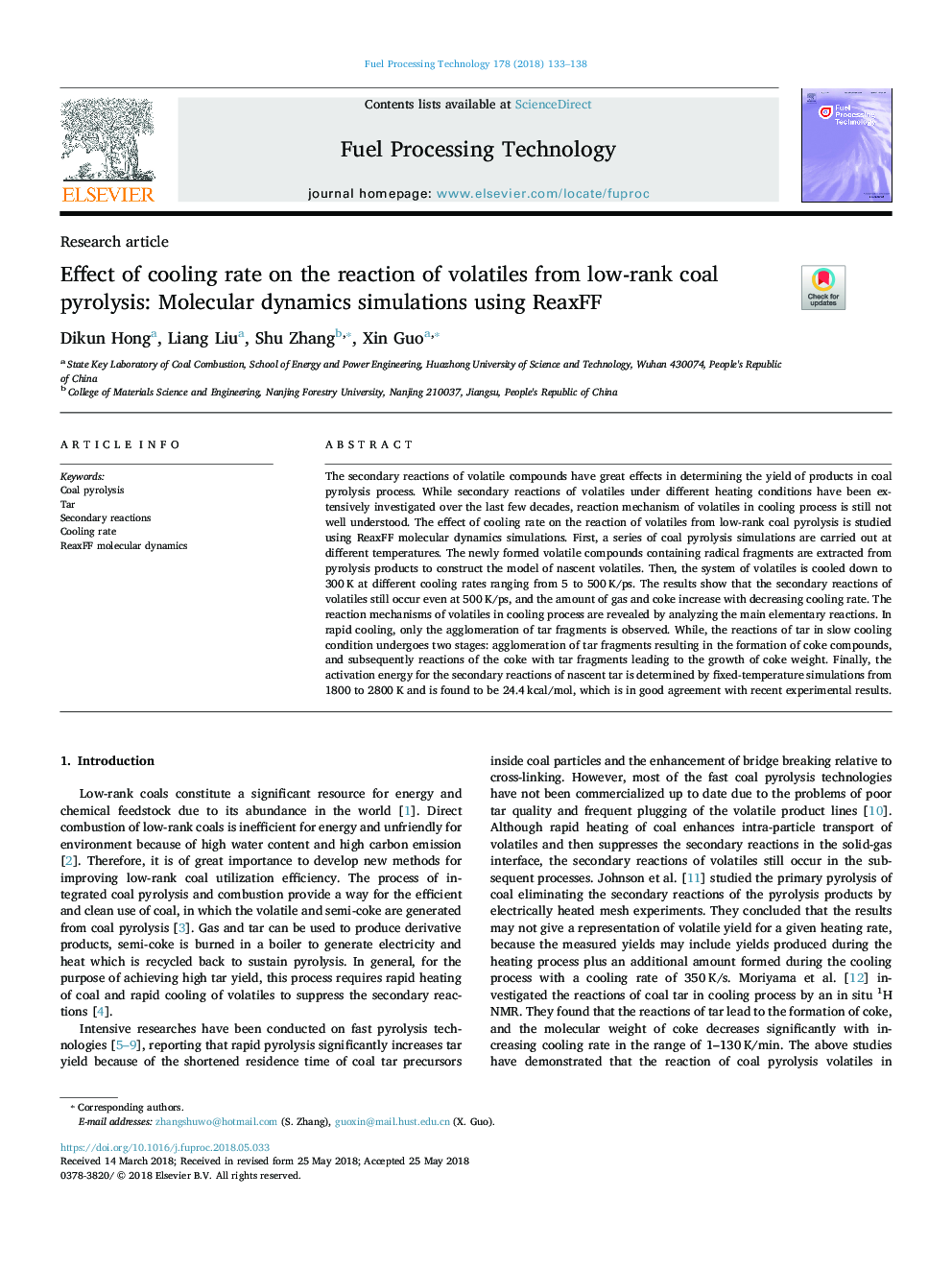| کد مقاله | کد نشریه | سال انتشار | مقاله انگلیسی | نسخه تمام متن |
|---|---|---|---|---|
| 6656281 | 1425368 | 2018 | 6 صفحه PDF | دانلود رایگان |
عنوان انگلیسی مقاله ISI
Effect of cooling rate on the reaction of volatiles from low-rank coal pyrolysis: Molecular dynamics simulations using ReaxFF
دانلود مقاله + سفارش ترجمه
دانلود مقاله ISI انگلیسی
رایگان برای ایرانیان
کلمات کلیدی
موضوعات مرتبط
مهندسی و علوم پایه
مهندسی شیمی
مهندسی شیمی (عمومی)
پیش نمایش صفحه اول مقاله

چکیده انگلیسی
The secondary reactions of volatile compounds have great effects in determining the yield of products in coal pyrolysis process. While secondary reactions of volatiles under different heating conditions have been extensively investigated over the last few decades, reaction mechanism of volatiles in cooling process is still not well understood. The effect of cooling rate on the reaction of volatiles from low-rank coal pyrolysis is studied using ReaxFF molecular dynamics simulations. First, a series of coal pyrolysis simulations are carried out at different temperatures. The newly formed volatile compounds containing radical fragments are extracted from pyrolysis products to construct the model of nascent volatiles. Then, the system of volatiles is cooled down to 300â¯K at different cooling rates ranging from 5 to 500â¯K/ps. The results show that the secondary reactions of volatiles still occur even at 500â¯K/ps, and the amount of gas and coke increase with decreasing cooling rate. The reaction mechanisms of volatiles in cooling process are revealed by analyzing the main elementary reactions. In rapid cooling, only the agglomeration of tar fragments is observed. While, the reactions of tar in slow cooling condition undergoes two stages: agglomeration of tar fragments resulting in the formation of coke compounds, and subsequently reactions of the coke with tar fragments leading to the growth of coke weight. Finally, the activation energy for the secondary reactions of nascent tar is determined by fixed-temperature simulations from 1800 to 2800â¯K and is found to be 24.4â¯kcal/mol, which is in good agreement with recent experimental results.
ناشر
Database: Elsevier - ScienceDirect (ساینس دایرکت)
Journal: Fuel Processing Technology - Volume 178, September 2018, Pages 133-138
Journal: Fuel Processing Technology - Volume 178, September 2018, Pages 133-138
نویسندگان
Dikun Hong, Liang Liu, Shu Zhang, Xin Guo,